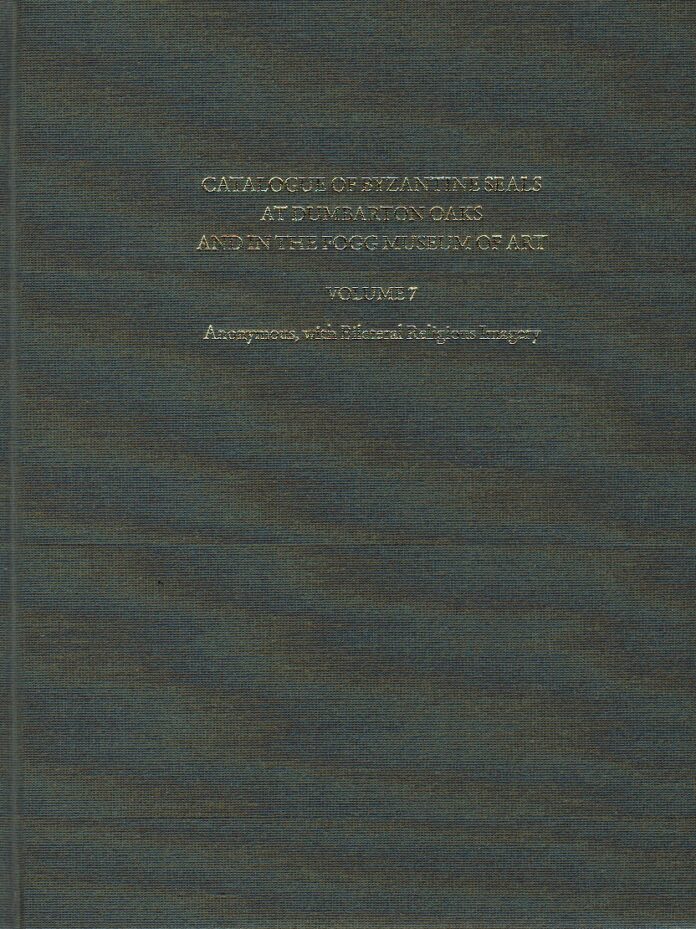
Sometimes it’s quite exciting to ask ourselves why we study what we study. I recently learned, for instance, that modern diplomatics – i.e. the science of diplomas – emerged as late as in the 18th century – and that sphragistics – the study of seals – was founded, so to say, as an auxiliary science of the auxiliary science in order to be able to better date documents and examine them with regard to their authenticity. But since the methods used for this were not those of diplomatics but those of numismatics, seals are usually stored in coin cabinets and not in archives. That’s why Dumbarton Oaks, which specializes in Byzantine research, and the Fogg Museum of Art in Harvard have an extensive collection of 17,000 Byzantine seals, which are continuously documented and scholarly reviewed in new volumes of their catalogue. In 2020, John A. Cotsonis published a new volume presenting all anonymous seals with religious imagery.
What Is the Purpose of Anonymous Seals?
The question of the purpose of anonymous seals is a very old one. After all, seals are meant to be personal signs. Why should the owner of a good, the one who signed the letter not want to reveal their name? That’s why 19th century scholars argued that such seals might not belong to individual persons but to religious institutions.
By now, this idea has long been outdated because there are written sources stating the opposite. Anna Comnena, the author of an important account of the reign of her father Alexios I, wrote for example that her mother used an anonymous seal with religious imagery when she represented her husband in his absence. Furthermore, we know that especially high-ranking officials and members of the imperial family liked to demonstrate their piety by decorating both sides of their seals with religious symbols. Thus, it could be possible that some members of high nobility and some officials deliberately refrained from using a seal that indicated their own name and used an anonymous one.
We can’t give a final answer to the question of why they did that. However, anyone who wonders why a car brand like Mercedes can be identified by means of the Mercedes star without the need to expressly mention the manufacturer can probably think of a reason why such seals were used. After all, it is not only a sign of modesty but also of arrogance to assume that anyone who sees it can identify a nameless sign.
Another possibility would obviously be to think of such seals as mass products that were cheaper to buy than those that featured one’s own name. But the fact that anonymous seals seem to be very rare contradicts this hypothesis. Of 117,177 recorded seals, only 572 belong to this category. If they were mass products, the figure would be much higher.
Introduction and Case Studies
The author of the catalogue, John A. Cotsonis, addresses these general issues in detail in his introduction. He explains that there were many different reasons for seal owners to prefer and opt for a personal motif. He arranges the various depictions in groups and reflects on the question of which of the sides has to be the obverse and which the reverse. He addresses dating issues and uses 27 case studies to illustrate how he justified the dates.
More Than a Simple Catalogue
Next is the catalogue – clearly arranged according to the different types of imagery. The 1:1 scale colour pictures are excellent. The seals are described and dated in detail. Occasionally, the author added a commentary on individual pieces.
For each type of depiction there is an introduction outlining the phenomenon as a whole. We learn from one of these introductions, for example, that there are only nine seals in the world that feature a depiction from the Old Testament, and that most scenic seals – i.e. those that don’t depict a person but their actions – date from the 11th and 12th centuries and are extremely rare. It is exciting to see that these findings can be deducted from the theological developments of the time. Back then, the Orthodox liturgical calendar as we know it today came into being containing important events from the life of Jesus and the Mother of God.
Therefore, this catalogue is much more than a mere catalogue for identifying seals; it understands seals as important sources, explains their context and informs the user about the theological message of the seals.
We do not need to mention that the catalogue is easy to use thanks to detailed indices and a glossary. That’s – just like the truly extensive bibliography – a given in view of the scholarly standard of the catalogue.
Thus, it can be stated that this book is a standard reference, which (unfortunately) only addresses a very limited audience. It is all the more wonderful that an institution like Dumbarton Oaks funds and publishes this kind of research. In a time when professors and curators are judged by how many students they have or how many people visit their exhibitions, it is good to see that some institutions are willing to finance basic research for the sake of research.
The result is an impressive work that I also recommend to those who are not interested in seals but in Byzantine coins. Since some motifs overlap with those of the seals, you can learn much about coin motifs from this work.
Please purchase the book directly from Dumbarton Oaks or from a numismatic bookseller of your choice.
If you are interested in the origin of diplomatics, we recommend an article from our partner publication Bookophile: Between Myth and History: The Genealogy of the Habsburgs.
Dumbarton Oaks publishes exciting podcasts on Byzantine history.
And on the Dumbarton Oaks website there is an impressive online presentation on Byzantine coins.




